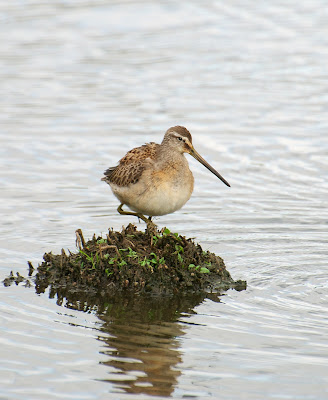I've only seen Bonaparte's Gulls twice before; once at Fort Steven's South Jetty and once on Pintail Pond at Jackson Bottom Wetlands Preserve. This past Saturday at Fernhill Wetlands I saw two, one of which was flying about Cattail Marsh, at times not far from me.
The images above make it obvious that this one is a first winter bird what with its tail feathers tipped in black and the extended black on its wing tips and upper wing coverts.
At one point it landed not far from me allowing for a few relatively close images.
The treat for me during this sighting was to watch it pluck prey off the water as it skimmed just above its surface. In both the images above, you can see a dark spot just in front of the bird on the water, which I assume is its prey. Cornell's site states that Bonaparte's Gulls feed on small fish and large invertebrates, including insects. I would guess it was feeding on insects.




















































